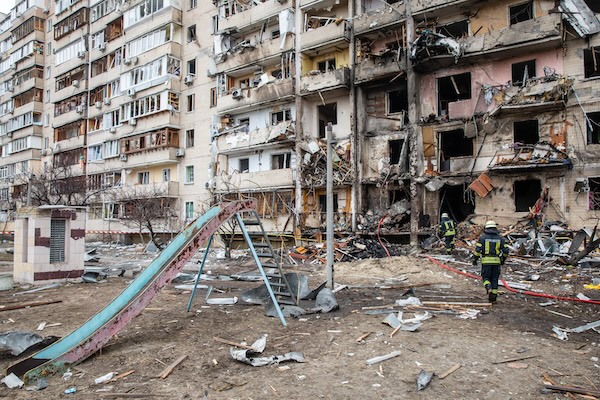Politics
NEW: Zelenskyy Folds, Agrees To Trump’s Mineral Deal
Ukrainian President Volodymyr Zelenskyy has agreed to a minerals deal with the United States, marking a turning point in negotiations that had sparked tensions with President Donald Trump. The agreement, confirmed by Ukraine’s Deputy Prime Minister and Justice Minister Olha Stefanishyna, comes as Kyiv seeks to secure economic and military support amid its prolonged conflict with Russia.
According to reports, the deal establishes a fund into which Ukraine will allocate 50% of proceeds from the monetization of its state-owned mineral resources, including oil and gas. The fund will be directed toward infrastructure and development projects within Ukraine, aligning with efforts to rebuild after three years of full-scale war.
Trump, who has been vocal about the need for stronger economic partnerships over unchecked financial aid, has framed the deal as a win for both nations. In recent weeks, he has pushed for a more transactional approach to U.S. assistance, insisting that Ukraine offer valuable resources in exchange for continued support.
Sources familiar with the matter suggest that initial disagreements between the two leaders stalled progress, but Kyiv ultimately agreed to revised terms that secured more favorable conditions.
According to the Financial Times, Zelenskyy is expected to travel to Washington in the coming weeks for a formal signing ceremony, a move seen as an effort to reaffirm U.S.-Ukraine ties under the evolving geopolitical landscape. The agreement comes as Ukraine faces mounting financial strain, with estimates placing the country’s recovery and reconstruction costs at over $500 billion.

Ukrainian President Volodymyr Zelenskiy and U.S. President Donald Trump’s special envoy, General Keith Kellogg, meet in Kyiv, Ukraine, on February 20, 2025
The latest iteration of the agreement, finalized on Monday, sets up a fund into which Ukraine will channel half of the revenue from the “future monetization” of state-owned mineral assets, such as oil, gas, and their associated logistics as reported by The Kyiv Independent. The fund is designated for investment in domestic projects, and it is unclear thus far what kind of share of the assets America will receive.
According to the terms of the deal, revenue streams from existing contributors to the Ukrainian state budget, including major oil and gas companies like Naftogaz and Ukrnafta, are not included.
The finalized agreement omits the security assurances that Kyiv had initially deemed crucial, a notable departure from earlier negotiations. The latest version of the accord also abandons previous American demands for a $500 billion entitlement to Ukraine’s natural resources, a significant contention point, as reported by the Ukrainian news outlet Economic Pravda, which reviewed the document.

KYIV, UKRAINE – Feb. 25, 2022: War of Russia against Ukraine. A residential building damaged by an enemy aircraft in the Ukrainian capital Kyiv
The updated terms stipulate that the fund will accrue 50% of the income from Ukraine’s resource-related infrastructure, including ports. The determination of “joint ownership” will depend on actual financial contributions, and although management will be collaborative, the U.S. retains decision-making authority under its legislation. The particulars of the U.S. involvement in the fund and the conditions of “joint ownership” are slated for clarification in subsequent agreements, as per the Financial Times.
President Zelenskyy had previously dismissed the U.S. proposal, citing the absence of security guarantees and opposing a 1:2 repayment scheme that would have obligated Ukraine to repay double the financial assistance it received.
The agreement follows a heated exchange between and Trump, who last week labeled Zelenskyy an unpopular “dictator” and suggested he needed to broker a swift peace deal or risk losing his country. The deal shifts Ukraine’s approach to securing economic assistance—trading long-term access to its natural resources in exchange for much-needed financial and infrastructural investment.







